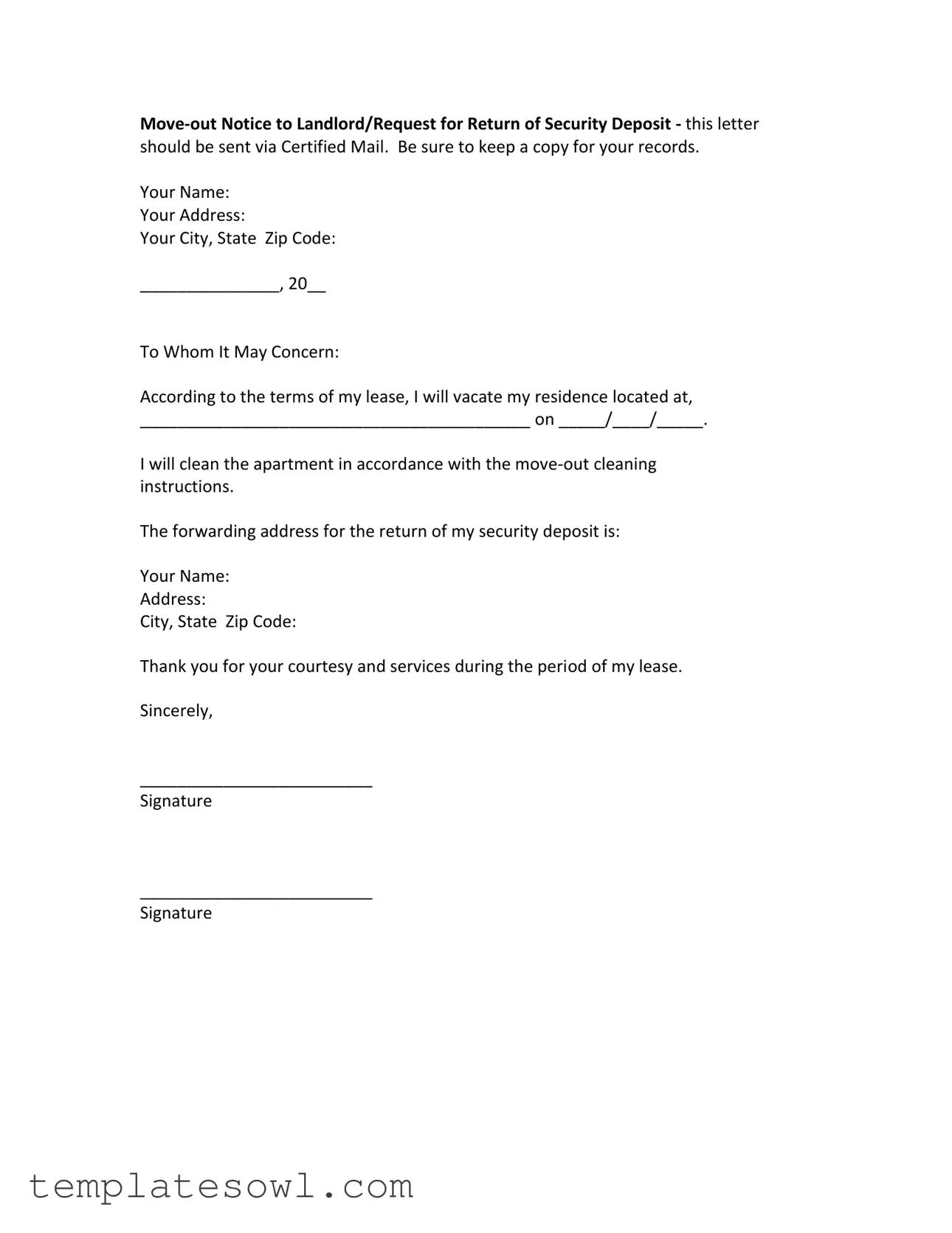What is a Move Out Notice Letter?
A Move Out Notice Letter is a formal notification sent to your landlord, indicating your intention to vacate the rental property. This letter typically includes your name, address, move-out date, and a request for the return of your security deposit. It is an important step in ensuring a smooth transition from your rental unit.
Why should I send the Move Out Notice Letter via Certified Mail?
Sending the notice via Certified Mail provides a record of delivery. This method ensures that your landlord receives the notice and can be helpful if any disputes arise regarding your move-out date or security deposit. Keeping proof of mailing protects your interests and establishes a timeline of communication.
What information do I need to include in the letter?
Your letter should include your name, current address, and the date you plan to vacate the property. Additionally, you must provide your forwarding address for the return of your security deposit. You may also want to mention that you will clean the apartment according to the specified instructions to leave the space in good condition.
How much notice do I need to give my landlord?
The required notice period typically depends on the terms stated in your lease agreement. Most leases require at least 30 days’ notice before vacating. However, it is crucial to refer to your specific lease for any stipulations regarding the notice period to ensure compliance.
What should I do if my landlord does not return my security deposit?
If your landlord fails to return your security deposit within the timeframe specified by state law, you may need to follow up with a formal request. Consult your state’s regulations regarding security deposit returns or seek legal advice if necessary. Documentation of your correspondence and move-out condition may be essential in these discussions.
Can I modify the letter to suit my situation?
Yes, you can customize the letter to reflect your circumstances. However, ensure that all necessary elements, such as your intent to move out and security deposit details, remain clear. Maintaining the formal tone and structure of the letter is vital for it to be taken seriously by your landlord.
